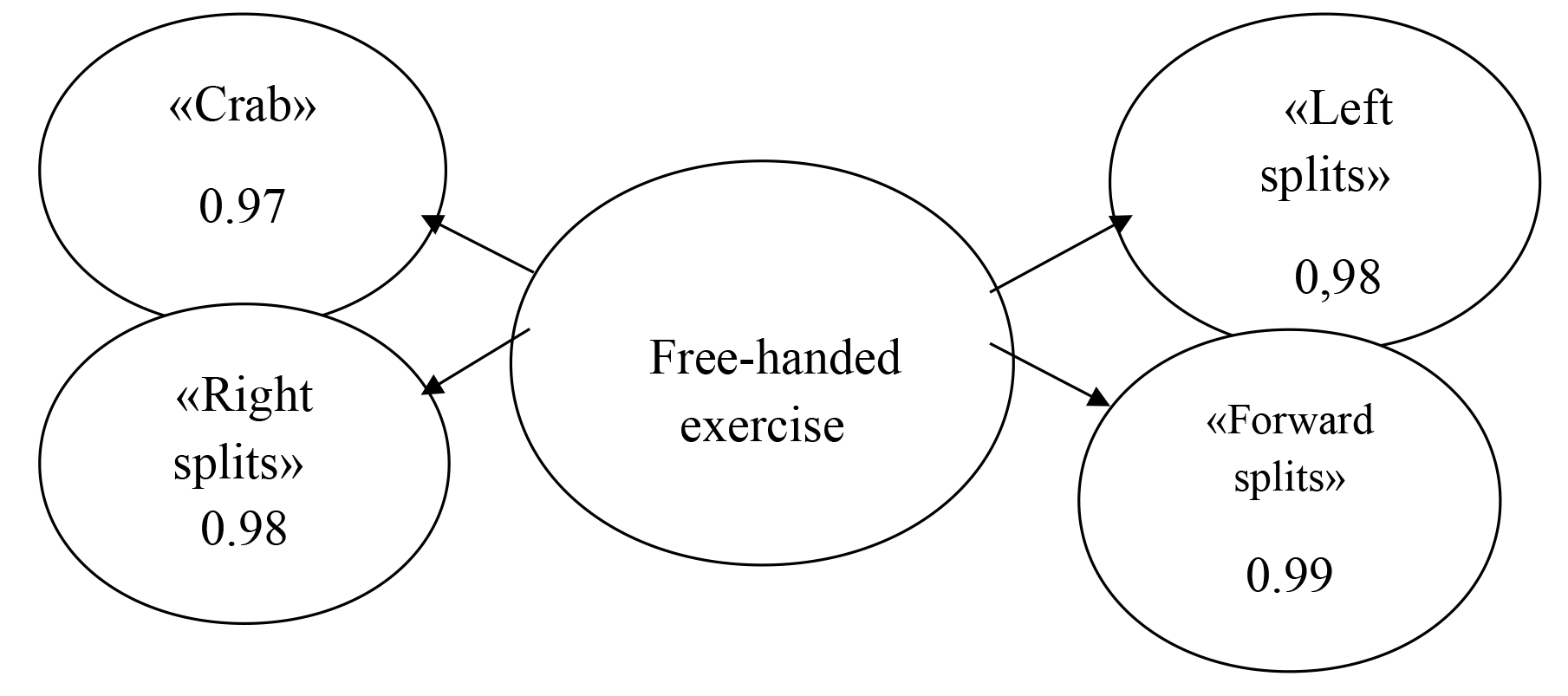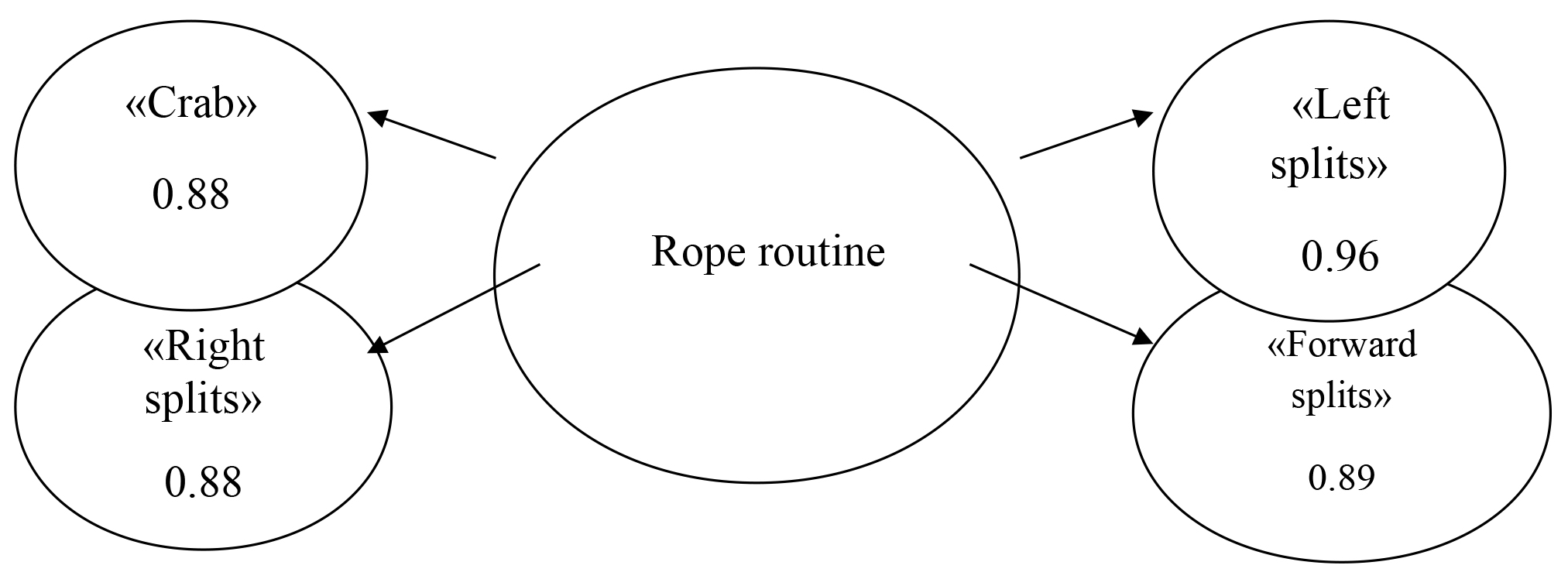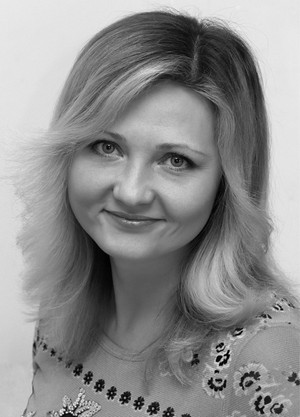Flexibility development in initial training in rhythmic gymnastics
Фотографии:
ˑ:
Associate professor, PhD N.G. Pechenevskaya1
Postgraduate E.V. Kartashova1
Associate professor, PhD J.V. Korichko2
Associate professor, PhD G.N. Pshenichnikova1
1Siberian State University of Physical Culture, Omsk
2Nizhnevartovsk State University of Physical Culture, Nizhnevartovsk
Keywords: flexibility, rhythmic gymnastics, circuit training, game like method, girls of 45 years of age.
Introduction. The value of physical fitness in rhythmic gymnastics is emphasized by many authors of research and methodological works [2, 3, 5, 7], which argue that physical fitness in all-around gymnastics provides the necessary technical skills. Development of flexibility is one of the most important aspects that reflect physical fitness in rhythmic gymnastics. Complex elements that demonstrate flexibility are most widely represented in compositions of competition exercises of the sport which makes the exercises graceful and sculpturesque [1, 3-5].
Therefore, at the present stage of development of rhythmic gymnastics, due to the increasing complexity of competition programs, increased requirements are presented to the level of physical fitness of female gymnasts, including those of flexibility. At present, requirements to performance of flexibility exercises with a large amplitude are reflected in the competition rules of the sport (2013-2016).
The basic form of flexibility elements is studied in the phase of primary education, therefore the requirements to the amplitude of performance of this group of elements became the same for both senior and junior categories [2, 7-10].
Moreover, it should be emphasized that rhythmic gymnastics has currently become much “younger”. If until recently children of 7-9 years old started attending primary training classes, according to the programs of today it is allowed to admit children of 5-6, and sometimes 4 years old [8]. Therefore, for today there is an issue of working out a modern approach to the development of flexibility of girls of 4-5 years of age, engaged in rhythmic gymnastics.
This is due to the fact that it is quite difficult to develop flexibility in the preschool age, since various stretching exercises are usually performed with multiple repetition which makes the process monotonous, and, therefore, children lose interest in their classes. A method of distributed application of flexibility exercises during training sessions with imaginative titles of exercises (“cat”, “crab”, “frog”, etc) is proposed in specialized research [1, 8].
Therefore, a game like method is used in technical and aesthetic sports at the stage of primary training. It is this method that is used in the process of physical education for comprehensive improvement of movements during their initial learning [1].
A method of circuit training involving targeted development of the necessary motor characteristics is also elaborated in specialized literature [3, 6]. However, we have not found in works on research and methodology any scientifically substantiated content of application of sets of warm up and lead-up exercises with circuit organization of sessions using the game like method for flexibility development in girls of 4-5 years of age engaged in rhythmic gymnastics. In this regard the present research is relevant.
Objective of the research was to elaborate methods of flexibility development at the elementary education phase for girls of 45 years of age, engaged in rhythmic gymnastics.
Methods and organisation of the research. In the set of flexibility exercises the age-related characteristics of girls of 45 years of age were taken into account [8]. Female gymnasts aged 45 years partook in the competition at the end of the school year. Competition program included free-handed exercises and rope routine. According to the results of the competition records were made, which were applied for correlation analysis. The effectiveness of training sessions in the reference and study groups was determined using a phased study of development of flexibility. A team of experts assessed four test exercises at the beginning and at the end of the research: a special “Crab” exercise for assessment of the overall mobility of the joints and a special “Splits” exercise for assessment of flexibility of the hip joints performed in three versions: “right”, “left” and “forward splits”.
The designed complex of exercises for flexibility development was applied in the main part of the session (twice a week), using the game like method; an interesting name was coined for each exercise attracting children’s attention. All the exercises were divided into stations (7 stations) and arranged in a circle; they were distributed so that there were no monotonous and monotonously repetitive movements inherent in the development of this characteristic. Exercises on different muscle groups alternated, so that the children had no feeling of fatigue or monotony.
Results and discussion. A high level of correlation (r = 0.97 – 0.99) to the “Forward splits” exercise was revealed in the study group between the quality of performance of control norms of flexibility and competition result (Figure 1).

Figure 1. Correlation between competition results in free-handed exercises and control norms of flexibility of female gymnasts of 4-5 years of age in the study group.
Rope routine results also revealed a high level of correlation (r = 0.88 – 0.96) with the quality of performance of control norms of flexibility (Figure 2).

Figure 2. Correlation between competition results in rope routine and control norms of flexibility of female gymnasts of 4-5 years of age in the study group.
Thus, a high degree of correlation between flexibility development indicators and competition results of female gymnasts of 4-5 years of age at the elementary phase of training in rhythmic gymnastics was revealed: “Forward splits” (r = 0.99), “Left splits” (r = 0.97), “Right splits” (r = 0.97) and “Crab” (r = 0.88). This indicates that flexibility has a positive impact on the technique of performing gymnastic elements in the competition program.
As a result, it can be recommended to develop mainly flexibility in female gymnasts of 4-5 years of age at the elementary phase of training. The effectiveness of the flexibility development technique is tested in an educational experiment and proved to be effective.
The sets of exercises applied in the phase of primary rhythmic gymnastics education were proved effective. Flexibility characteristics in the study group were significantly higher (P <0.05) than in the reference one, indicating the positive impact of the developed methods of circuit training for 45-year-olds engaged in rhythmic gymnastics (Table 1).
Table 1. Differences in flexibility characteristics in the reference and study groups at the end of the experiment.
|
Groups |
«Crab» |
«Splits» |
||
|
left |
right |
forward |
||
|
Reference |
3.8 ± 1.8 |
3.7 ± 1.8 |
4.1 ± 2.2 |
3.8 ±2.4 |
|
Study |
4.1 ± 1.5 |
4.0 ± 1.5 |
4.2 ± 2.4 |
4.1 ± 1.4 |
|
р |
< 0.05 |
< 0.05 |
> 0.05 |
< 0.05 |
Female gymnasts of 4-5 years of age took part in competitions dedicated to Children’s Day at the end of the school year. Competition program included free-handed exercises and rope routine.
According to the results of the competition records were made that were used by us to perform mathematical calculations (Table 2).
Table 2. Differences in technical skills characteristics of girls of 4-5 years old in the reference and study groups at the end of the experiment.
|
Groups |
Free-handed exercise |
Rope routine |
|
Reference |
6.08 ± 2.8 |
6.14 ± 2.4 |
|
Study |
8.08 ± 1.4 |
8.14 ± 2.2 |
|
р |
< 0.05 |
< 0.05 |
As a result of the research the flexibility of female gymnasts of 4-5 years old improved during 6 months of training in rhythmic gymnastics in the reference group, although insignificantly (Р > 0.05), as in the study group (р < 0.05) that was trained according to out technique of flexibility development by circuit training using the game like method.
Conclusion. The sets of exercises applied in the phase of primary rhythmic gymnastics education were proved effective. Flexibility characteristics in the study group were significantly higher (P <0.05) than in the reference one, indicating the positive impact of the developed methods of circuit training for 45-year-olds engaged in rhythmic gymnastics.
References
- Aspekty podgotovki v tekhniko-esteticheskikh vidakh sporta: monografiya (Aspects of training in technical and aesthetic sports: monograph) / Ed. by G.N. Pshenichnikovoy, G.V. Povalyaeva. - Omsk: SIBGUFK, 2014. – 208 P.
- Vlasova O.P. Razvitie gibkosti pri obuchenii elementam bez predmeta na etape nachal'noy podgotovki v khudozhestvennoy gimnastike: avtoref. dis. … kand. ped. nauk (Flexibility development in teaching free-handed elements in elementary rhythmic gymnastics education: abstract of PhD thesis) / O.P. Vlasova. – Omsk, 2011. – 23 P.
- Govorova M.A. Spetsial'naya fizicheskaya podgotovka yunykh sportsmenok vysokoy kvalifikatsii v khudozhestvennoy gimnastike: ucheb. posobie (Special physical training of young elite female rhythmic gymnasts: study guide) / M.A. Govorova. - Moscow: Rus. Fed. Rhythmic Gymnastics, 2001. – 50 P.
- Gorbacheva J.P. Formirovanie plasticheskoy vyrazitel'nosti v khudozhestvennoy gimnastike: avtoref. dis. … kand. ped. nauk (Formation of plastic expression in rhythmic gymnastics: abstract of PhD thesis) / J.P. Gorbacheva. – St. Petersburg, 2000. – 23 P.
- Gorokhova V.E. Spetsial'naya fizicheskaya podgotovka gimnastok k vypolneniyu seriy iz elementov povyshennoy trudnosti: avtoref. dis. … kand. ped. nauk (Special physical training of female gymnasts to perform series of advanced elements: abstract of PhD thesis) / V.E. Gorokhova. – Moscow, 2002. – 26 P.
- Krugovaya trenirovka (Teoret., metod. i org. osnovy odnoy iz sovrem. form ispol'zovaniya fiz. uprazhneniy v shkole i sportivnoy trenirovke). (Circuit Training (theor., method. and org. foundations of one of modern uses of phys. exercises in school and sports training) [Transl. from Germ.] / [Ed. and foreword by L.P. Matveev]. – Moscow: Fizkul'tura i sport, 1966. – 165 P.
- Pshenichnikova G.N. Obosnovanie rassredotochennogo primeneniya uprazhneniy na gibkost' v khudozhestvennoy gimnastike na etape nachal'noy podgotovki (Justification of dispersed application of flexibility exercises in rhythmic gymnastics in initial training phase) / G.N. Pshenichnikova, O.P. Vlasova, J.V. Korichko // Fizicheskaya kul'tura: vospitanie, obrazovanie, trenirovka. – 2010. – № 5. – P. 42–48.
- Pshenichnikova G.N. Obuchenie elementam bez predmeta na etape nachalnoy podgotovki v hudozhestvennoy gimnastike: ucheb. posobie (Teaching free-handed elements in initial training phase in rhythmic gymnastics: study guide) / G.N. Pshenichnikova, O.P. Vlasova. – Omsk: SIBGUFK (SibSUPC) Pub. h-se, 2013. – 187 P.
- Khudozhestvennaya gimnastika: Pravila sudeystva (Rhythmic gymnastics: Refereeing rules). - FIZh, 2013 – 2016. –130 P.
- Khudozhestvennaya gimnastika: uchebnik (Rhythmic Gymnastics: textbook) / Ed. by P.A. Karpenko. - Moscow, 2003. – 382 P.
Corresponding author: korichko_nv@mail.ru
Abstract
Objective of the research was to elaborate methods of flexibility development at the elementary education phase for girls of 45 years of age, engaged in rhythmic gymnastics. There were developed flexibility exercises which were broken into "sections" to organize "circuit" training. In the set of flexibility exercises the age-related characteristics of girls of 45 years of age were taken into account. Female gymnasts aged 45 years took part in the competition at the end of the school year. Competition program included free-handed exercises and rope routine. According to the results of the competition records were made, which were applied for correlation analysis. The effectiveness of training sessions in the reference and study groups was determined using a phased study of development of flexibility.
The sets of exercises applied in the phase of elementary rhythmic gymnastics education were proved effective. Flexibility characteristics in the study group were significantly higher (P <0.05) than in the reference one, indicating the positive impact of the developed methods of circuit training for 45-year-olds engaged in rhythmic gymnastics.



